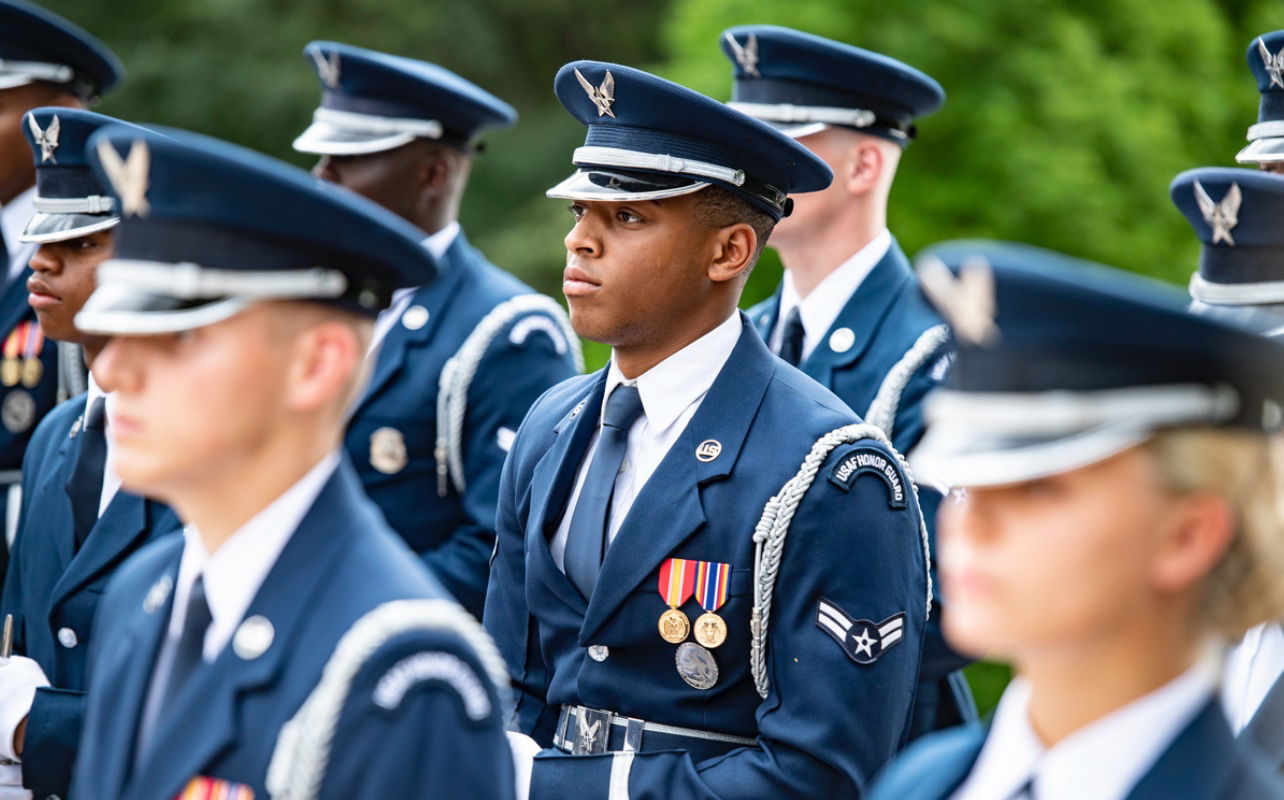
April 2, 2024
Air Force Struggles To Balance Diversity And Selective Admittance
Black cadets in the Air Force only graduate at a 60% rate, as opposed to 80% for the rest of the military service branch.
The Air Force has long struggled with diversity, and it does not appear to be getting much better. Even though the percentage of Black cadets is overrepresented relative to the percentage of Black people in the American population, only 6% of Air Force officers are Black.
As Reuters reports, Black cadets in the Air Force only graduate at a 60% clip, as opposed to 80% for the rest of the military service branch. This means that Black cadets are dropping out of the Air Force, which some attribute to the Air Force’s emphasis on legacy and tradition—and the United States’ own legacy of underestimating the potential of Black Americans.
Russell Roberts, a Black former cadet in the Air Force, eventually left due to hostile treatment he received at the service branch. He told Reuters that some of the treatment he received was race-based, but stopped short of calling it racist.
“I do feel like some of it was race-related, but I don’t want to say it was racist,” he said.
In 2020, the office of the Air Force inspector general issued a report detailing the racial disparities present in the Air Force. The report set forth that Black officers were less likely to obtain promotions and that 33% of Black officers believed they were not given the same opportunities as white officers to advance their careers.
According to the inspector general’s report, “Thousands of Black service members and civilians reported issues ranging from bias to outright racial discrimination.”
However, as The Hill reported in 2023, apart from even getting into the Air Force, prospective Black and Latinx cadets are barred from entry by the military service’s entry requirements. Some of the rules have been relaxed, but the entry requirements remain highly selective, even though the service branch maintains a prep school to assist prospective cadets with entry into the academy.
Factors such as body mass index, height, educational attainment, and aptitude standards pose significant obstacles to eligibility for both enlisted personnel and officers. Health status, citizenship, criminal history, and tattoos present further challenges. For example, individuals seeking to enlist must possess a high school diploma or GED, have no more than two dependents, not be single parents, and have no felony convictions. Such criteria impact the eligibility of various gender, racial, and ethnic groups disparately, as outlined in the report.
Louis Mariano, one of the study’s authors, told Air & Space Forces that the Air Force should look at the report, which breaks down the categories in a more nuanced way, as an illustration of where it can implement strategies to increase diversity.
“If we just report on all females, we’re missing the part of the story that Black females are actually exceeding their eligible and propensed population when it comes to enlisted accessions,” Mariano said. “We miss parts of the story if we collapse that way. We built the app to do it ourselves and then we made it so that the Air Force can run it again for continual monitoring.”
In 2022, Bishop Garrison, senior adviser to the Secretary of Defense for Human Capital and Diversity, Equity, and Inclusion, told the Center for a New American Security, “I want people to see [diversity, equity and inclusion] as another tool in the toolkit and another way of solving these problems.”
Garrison continued, “It’s not just something that has to be done because of some type of cultural ideology or culture wars that are going on—that’s not the case at all. It is, again, not diversity for diversity’s sake.”
RELATED CONTENT: 19-Year-Old Black Sailor Identified 80 Years After Death During Pearl Harbor Attack